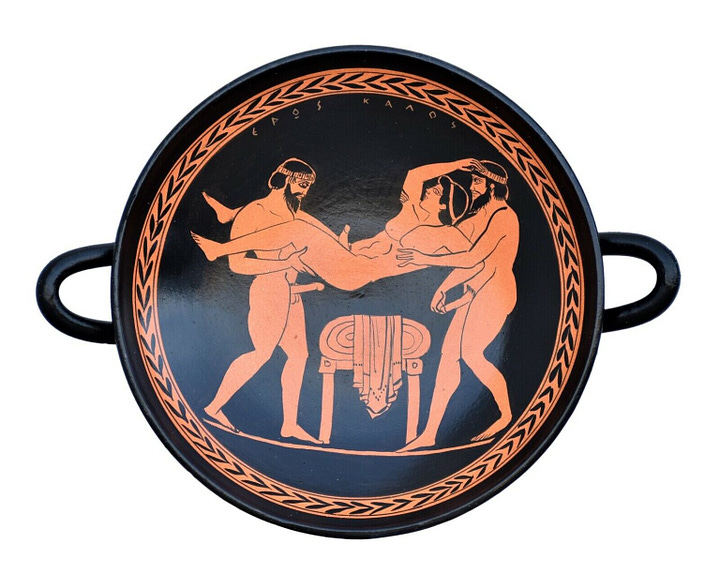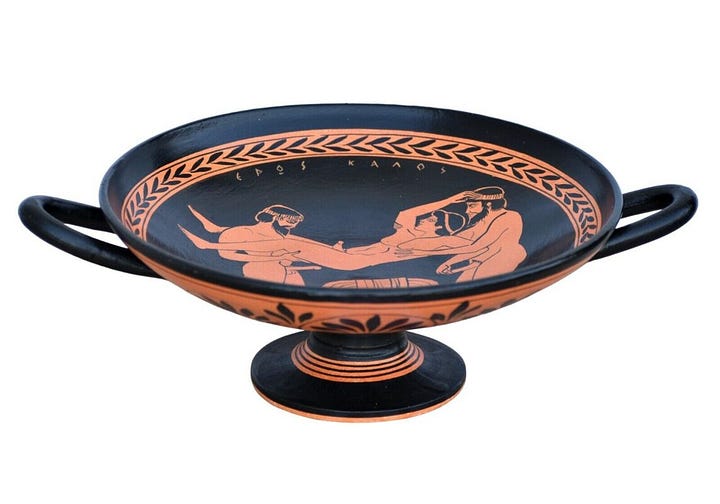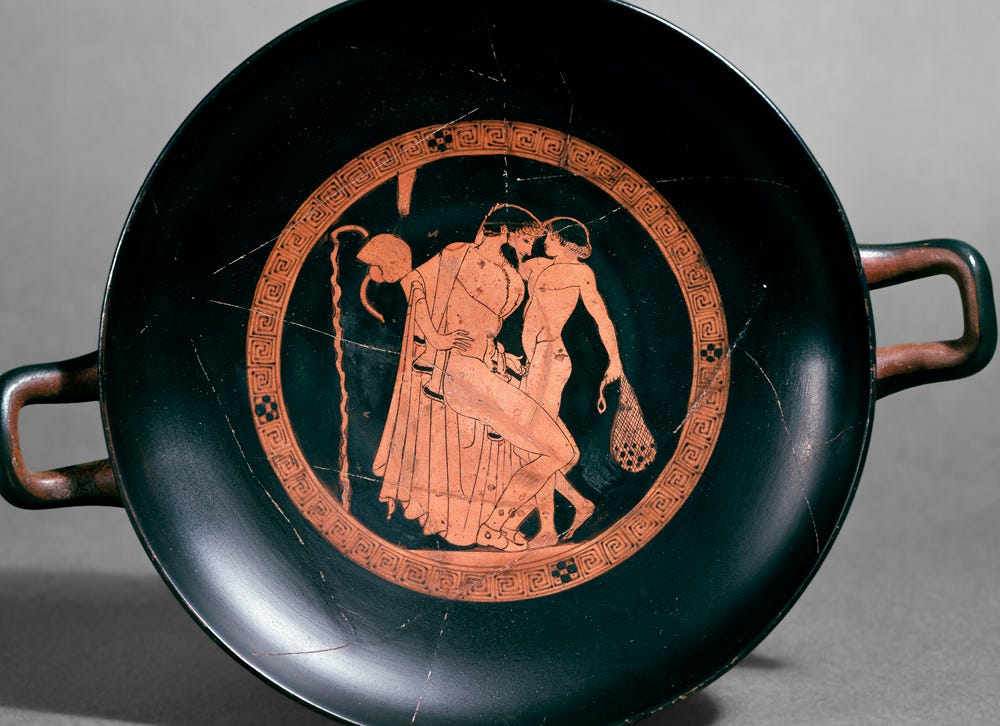Why Ancient Greeks Celebrated Erotic Age Dynamics
Step inside ancient society’s views on sexuality and mentorship.


In modern society, sexuality and age dynamics are topics fraught with controversy and societal taboo. But in Ancient Greece, the boundaries of acceptable desire looked radically different. Pottery surviving from this era provides an unfiltered glimpse into a culturally complex practice known as pederasty, where explicit images were not only acceptable but celebrated openly.
Understanding Pederasty in Ancient Greece
The term "pederasty" (from the Greek paiderastia, meaning "love of boys") refers specifically to relationships between older men (erastes) and younger adolescent boys (eromenos). More than sexual connections, these relationships were socially institutionalized, involving education, mentorship, and intellectual companionship. Typically, the older male would guide the younger in matters of politics, philosophy, warfare, and society.
Though shocking by contemporary standards, these relationships were woven seamlessly into Greek life. From Sparta to Athens, such bonds were considered foundational to fostering maturity, leadership, and manhood. But far from being purely educational, pederasty encompassed deeply erotic and sensual components, openly acknowledged and even artistically celebrated.

Pottery as a Window into Greek Sexuality
Ancient Greek pottery, especially from around the 6th to 4th centuries BCE, provides some of the most explicit depictions of pederasty. It reveals how Greek culture openly celebrated and normalized these relationships within their art and daily lives. Cups, vases, and kraters adorned with vividly sexual imagery weren’t hidden away—they were used openly at symposiums, private parties where men gathered for wine, discussion, and entertainment.
The first example of pottery (above) shows a graphic scene involving multiple men openly engaged in erotic acts. Such explicit depiction of sexuality on a common item highlights how normalized these practices were in social circles. The second example, depicting a clear erastes-eromenos dynamic, portrays intimacy, physical closeness, and the established age and power dynamics central to pederasty. It emphasizes affection and mentorship as much as it captures explicit eroticism.
Explicit Imagery as Cultural Reflection
Why such explicitness on everyday objects? The answer lies in the Greeks' view of sexuality as an integral part of human life and development. Sexual images were not shameful but rather celebrations of desire, intimacy, and pleasure. They illustrated openly acknowledged cultural norms around masculinity, power dynamics, and mentorship. Far from scandalous, such portrayals reflected social values and underscored the bonds that defined their society.
Pottery also served educational purposes, subtly teaching younger generations the customs, expectations, and behaviors expected in these socially significant relationships. These artifacts represent historical documents, detailing not only sexual practices but broader societal values and views.
Modern Perspectives: Controversy and Context
From today’s perspective, ancient pederastic practices raise profound questions about consent, age-appropriate relationships, and power imbalances. Viewing this pottery through a contemporary lens invites discomfort, debate, and necessary criticism.
However, exploring these artifacts also encourages understanding of how social norms evolve. Cultural standards around sexuality, consent, and age dynamics are continuously shifting—these artifacts remind us how drastically perspectives have changed. They offer insight into how sexuality is culturally constructed and encourage critical reflection on modern norms.
Influence on LGBTQ+ Historical Understanding
Understanding Ancient Greek pottery and the practice of pederasty offers valuable insight into broader LGBTQ+ histories. It sheds light on how relationships we view as taboo today were foundational to cultures that profoundly shaped Western civilization. Recognizing these complexities allows a deeper appreciation of historical attitudes toward sexuality and provides meaningful context in the ongoing exploration of queer identity.
Moreover, ancient art depicting same-sex desire, regardless of modern interpretations, has been a cornerstone for LGBTQ+ communities seeking historical visibility and recognition. Acknowledging and examining these artifacts contributes to a richer, more nuanced understanding of sexuality throughout history.
Pottery as a Portal
These striking pottery images from Ancient Greece are more than just erotic art—they are historical windows revealing the complexity, openness, and contradictions of a society fundamentally different from our own. They force us to confront how cultural norms dictate our comfort with explicitness, sexuality, and age dynamics.
By exploring these pottery examples, we gain an invaluable perspective on human sexuality's fluidity, complexity, and social construction. Ultimately, artifacts like these are not merely curiosities—they challenge, provoke, and educate, highlighting the ever-evolving nature of human desire and relationships.





I'm amused there's no comment on this post. The US has deep Puritan roots. Add to that the rank hypocrisy of the current fascism & you come up with folks afraid to comment on a historical narrative. Mind you, that's at the same time these fascists are constantly trying to LOWER the Age of Consent & Marriage for white girls. Louisiana, Missouri, Iowa & more have strong movements advocating for that -- with that adjectival requirement.
Each society works out the rules they follow eventually. Autre temps; Autre mores.